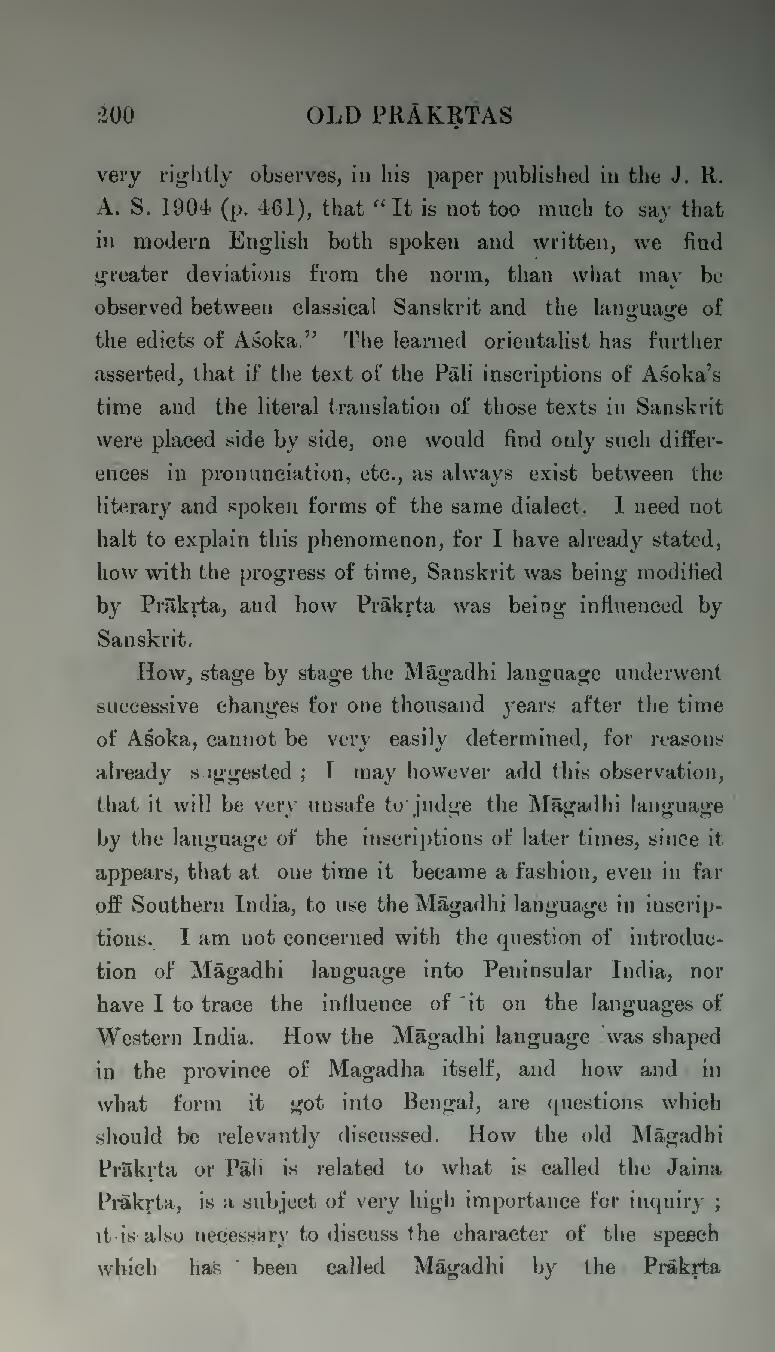very rightly observes, in his paper published in the J. R. A. S. 1904 (p. 461), that "It is not too much to say that in modern English both spoken and written, we find greater deviations from the norm, than what may be observed between classical Sanskrit and the language of the edicts of Aśoka." The learned orientalist has further asserted, that if the text of the Pāli inscriptions of Aśoka's time and the literal translation of those texts in Sanskrit were placed side by side, one would find only such differences in pronunciation, etc., as always exist between the literary and spoken forms of the same dialect. I need not halt to explain this phenomenon, for I have already stated, how with the progress of time, Sanskrit was being modified by Prākṛta, and how Prākṛta was being influenced by Sanskrit.
How, stage by stage the Māgadhi language underwent successive changes for one thousand years after the time of Aśoka, cannot be very easily determined, for reasons already suggested; I may however add this observation, that it will be very unsafe to judge the Māgadhi language by the language of the inscriptions of later times, since it appears, that at one time it became a fashion, even in far off Southern India, to use the Māgadhi language in inscriptions. I am not concerned with the question of introduction of Māgadhi language into Peninsular India, nor have I to trace the influence of it on the languages of Western India. How the Māgadhi language was shaped in the province of Magadha itself, and how and in what form it got into Bengal, are questions which should be relevantly discussed. How the old Māgadhi Prākṛta or Pāli is related to what is called the Jaina Prākṛta, is a subject of very high importance for inquiry; it is also necessary to discuss the character of the speech which has been called Māgadhi by the Prākṛta
